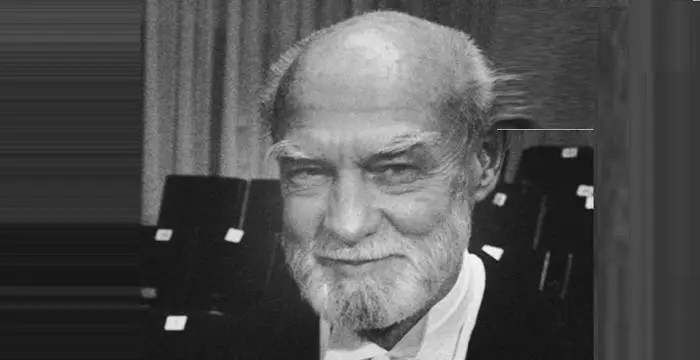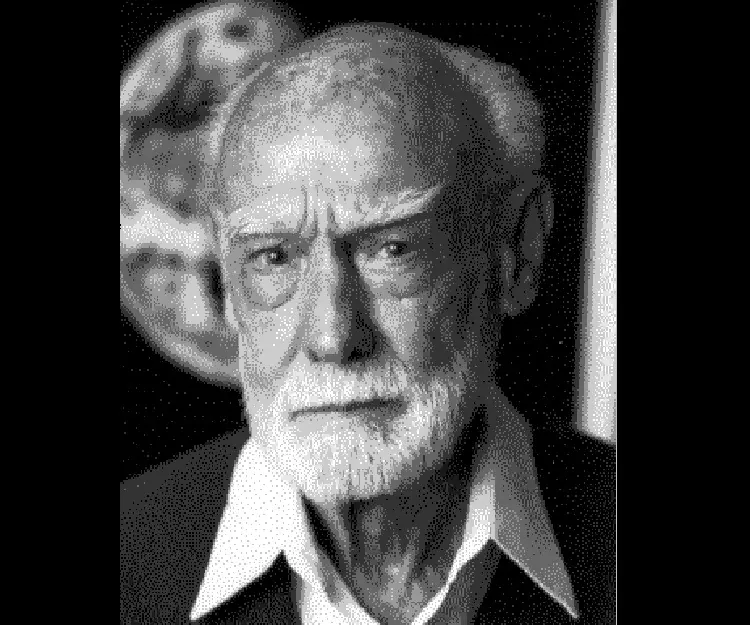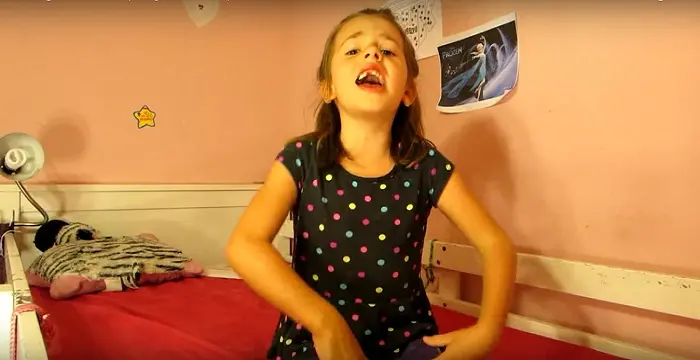
Roger Wolcott Sperry - Neuropsychologist, Timeline and Personal Life
Roger Wolcott Sperry's Personal Details
Roger Wolcott Sperry was a noted neuropsychologist and neurobiologist who won the 1981 Nobel Prize in Physiology and Medicine
| Information | Detail |
|---|---|
| Birthday | August 20, 1913 |
| Died on | April 17, 1994 |
| Nationality | American |
| Famous | University Of Chicago, Scientists, Neuropsychologist |
| City/State | Connecticut |
| Universities |
|
| Notable Alumnis |
|
| Birth Place | Hartford, Connecticut, United States |
| Gender | Male |
| Sun Sign | Leo |
| Born in | Hartford, Connecticut, United States |
| Famous as | Neuropsychologist |
| Died at Age | 80 |
Roger Wolcott Sperry's photo
Who is Roger Wolcott Sperry?
Roger Wolcott Sperry was a noted neuropsychologist and neurobiologist, who was one of the co-recipients of the 1981 Nobel Prize in Physiology and Medicine for his study of functional specialization in the cerebral hemispheres. According to a survey done by the noted scientific journal, Review of General Psychology, he was the 44th most cited psychologist of the 20th century. Although he entered college with English as his major he quickly became interested in psychology and after graduation, switched his subject to earn his M.A. in psychology and PhD in zoology. From the beginning he worked on brain, first with rats, then with salamanders, newts and cats. However, his studies of epileptic patients with split brain earned the greatest fame. His experiments not only established that the corpus callosum, which joins the two hemisphere of the brain, functions as a channel to pass information between the two hemispheres, but also that each hemisphere of the brain undertakes specific functions. The work overturned the prevailing idea that the left side of the brain is more dominant than the others. He was also a skillful experimentalist and often undertook very clever operations in course of his experiments. Although disease made him physically immobile he remained intellectually active till his last and contributed much to the human knowledge.
// Famous Scientists
Juliane Koepcke
Juliane Koepcke is a German-Peruvian biologist, who was the lone survivor among the 92 passengers and crew of the ill-fated LANSA Flight 508 that crashed in the Peruvian rainforest on 24 December 1971. Know more about her life in this biography.
Henry Cavendish
Henry Cavendish was a theoretical chemist and physicist, renowned for discovery of hydrogen and calculation of the mass of earth. To know more about his childhood, profile, timeline and career read on
Konstantin Tsiolkovsky
Konstantin Tsiolkovsky was a Russian rocket scientist and a pioneer of astronautics. This biography provides detailed information about his childhood, family, personal life, career, achievements, etc.
Childhood & Early Life
Roger Wolcott Sperry was born on August 20, 1913, in Hartford, Connecticut. His father, Francis Bushnell Sperry, was a banker while his mother, Florence Kraemer Sperry, was trained in business school. He had a younger brother, Russell Loomis Sperry, who grew up to be a chemist.
Roger’s father died when he was just eleven years old. To support the family, his mother accepted employment in the local high school as an assistant to the principal.
Roger began his education at Elmwood, Connecticut and then went to William Hall High School in West Hartford, Connecticut, passing out from there in 1931. During this period, he made his mark both at academics and sports.
Subsequently, Sperry entered Oberlin College on a four-year Amos C. Miller Scholarship with English as his major. Sometime now, he was introduced to psychology by Professor R. H. Stetson and began to grow an interest in brain functioning.
Consequently, after receiving his B.A. in English literature in 1935 he started studying psychology under Professor R. H. Stetson. In 1937, he received his M.A. degree in psychology. Next, he decided to do his Ph.D. on zoology. Therefore, he stayed back one more year at Oberlin College to prepare for that.
Later, he began his doctoral work under Paul A. Weiss at the University of Chicago. In the course of his work, he tried to answer if nature was more important than nurture. He received his Ph.D. degree in 1941.
As part of his doctoral work, Sperry took nerves from right hind legs of the rats and placed them in the left hind legs of other rats and vice verse. He then subjected them to electric shock and found that if the shock was applied to the left paw, the rat would lift its right paw and vice verse.
After repeated experiments, Sperry came to conclusion that something can never be learned. His doctoral dissertation was titled ‘Functional results of crossing nerves and transposing muscles in the fore and hind limbs of the rat’.
Career
Soon after receiving his PhD in 1941, Sperry joined Harvard University and began his one-year postdoctoral research as a National Research Council Fellow under Professor Karl S. Lashley. However, he and Lashley spent the greater part of the year at the Yerkes Primate Research Center.
In 1942, he became Biology Research Fellow at Yerkes Laboratories of Primate Biology under Harvard University. Here too, his research was focused on neuronal rearrangement. However, this time he experimented with the salamanders.
As part of the experiment, he divided the optic nerves and rotated the eyes of the salamanders 180 degrees. The animals behaved as though the world was upside down. Although he tried to train them he was not successful in changing their response.
In 1946, he returned to the University of Chicago as an Assistant Professor at the Department of Anatomy. Sometime in 1949, he was diagnosed with tuberculosis and was sent to Adirondack Mountains in New York for treatment. It was during that period that he began to develop his ideas on mind and brain.
He published the concept in 1952 in ‘American Scientist’, the well-known science and technology magazine. However, prior to that, in 1951, he had established the Chemoaffinity hypothesis, which states that the initial wiring diagram of an organism is determined by the genetic makeup of its cell.
Also in 1952, Sperry became the Section Chief of Neurological Diseases and Blindness at the National Institutes of Health and later in the year, joined Marine Biology Laboratory in Coral Gables, Florida. He then returned to University of Chicago as Associate Professor of Psychology and remained there till 1953.
Sometime now, he was offered the post of Hixson Professor of Psychobiology at California Institute of Technology. Therefore, in 1954, he shifted to California, where he continued with his work on the regeneration of nerve fibers.
At Caltech, he also began to work with cats on split brain functions. He connected the left eye of the cats with the left hemisphere of their brain and the right eye with the right hemisphere. Then he cut off the corpus callosum, which joins the two hemispheres of the brain.
He then proceeded to teach the cats to distinguish between squares and triangles first with right eye and then with left eye covered. Their response led him to believe that the left and right hemispheres of the brain function independently.
Next, he began to work with epileptic patients, whose corpus callosum had been severed in order to contain the ailment. This work not only helped to understand the lateralization of brain function to a great extent, but at personal level, it earned him the coveted Nobel Prize.
During later years, he turned away from the experimental science and began developing a theory on consciousness. He also worked to develop science based on ethical values. His last published book was ‘Science and Moral Priority: Merging Mind, Brain, and Human Values’ (1983).
Sperry remained at the California Institute of Technology until 1984. Later, he served on the Board of Trustees and as Professor of Psychobiology Emeritus at the institute. However, he never stopped working and was often found at his office deeply thinking or jotting down his thought in his notebook.
Major Works
His pioneering work on the African Clawed Frog, which resulted in the start of the Chemoaffinity Hypothesis, is one his most important works. He removed the eye of a frog and after rotating it 180 degree replaced it in such a way that ventral part of the eye was positioned at top and the dorsal was positioned at the bottom.
Very soon the nerves were regenerated. But, when the food source was place above the frog, it flipped its tongue downwards. After repeated experiments, he came to the conclusion that the optic nerve, which transfers visual experience from retina to brain and neuron in the tectum region of the brain, used a chemical marker, which influenced their connectivity.
He is best known for his work on split brain. In general, the left and right hemisphere of the brain is connected with the corpus callosum. While working the cats, he had found that if the corpus callosum is severed the two hemisphere of the brain can act independently.
The experiment led to the notion that the cutting of the corpus callosum would help an epileptic patient because that would prevent the seizure from traveling from one hemisphere to another. It was also found that such an operation did not have any impact on the patients’ behavior.
That led to the question if the corpus callosum actually had any function. To find that out Sperry began to work with his graduate student Michael Gazzaniga on epileptic patients, whose corpus callosum had been severed. After a long and exhaustive research it was found that it served as a channel of communication between the two hemispheres of the brain.
He also found that each half of the brain performs specialized task. The left hemisphere is dominant over analytical and verbal tasks such as writing, speaking, mathematical calculation, reading while the right hemisphere handles spatial, visual, and emotional tasks such as problem solving, recognizing faces, symbolic reasoning, art etc.
Awards & Achievements
In 1981, Rodney Wolcott Sperry received one half of the Nobel Prize in Physiology or Medicine "for his discoveries concerning the functional specialization of the cerebral hemispheres". The other half was jointly shared by David H. Hubel and Torsten N. Wiesel "for their discoveries concerning information processing in the visual system".
Personal Life & Legacy
In 1949, Sperry married Norma Gay Deupree. The couple had two children; a son named Glenn Michael, and a daughter named Janeth Hope.
Sperry was an enthusiastic paleontologist and had a large collection of fossils. He was also an excellent sculptor and loved to work with ceramics. Going on camping and fishing trips with his family was another of his favorite pastime.
Towards the end of his life he started suffering from a degenerative neuromuscular disease. He died on April 17, 1994, due to heart failure, at Pasadena, California..
// Famous University Of Chicago
Satya Nadella
Satya Nadella is the current CEO of Microsoft. This biography provides detailed information about his childhood, profile, career, net worth & timeline
Emily Greene Balch
Emily Greene Balch was an American economist, sociologist and pacifist who won the 1946 Nobel Peace Prize. This biography of Emily Greene Balch provides detailed information about her childhood, life, achievements, works & timeline.
Susan Sontag
Susan Sontag is an American critical essayist, cultural analyst, novelist, political activist, filmmaker and playwright of international repute. Read on to find out more about her childhood, career, profile and timeline.
Roger Wolcott Sperry's awards
| Year | Name | Award |
|---|---|---|
Other | ||
| 0 | 1981 - Nobel Prize in Physiology or Medicine | |
| 0 | 1979 - Wolf Prize in Medicine | |
| 0 | 1979 - Albert Lasker Award for Basic Medical Research | |
| 0 | 1989 - National Medal of Science for Biological Sciences | |
Roger Wolcott Sperry biography timelines
- // 20th Aug 1913Roger Wolcott Sperry was born on August 20, 1913, in Hartford, Connecticut. His father, Francis Bushnell Sperry, was a banker while his mother, Florence Kraemer Sperry, was trained in business school. He had a younger brother, Russell Loomis Sperry, who grew up to be a chemist.
- // 1931Roger began his education at Elmwood, Connecticut and then went to William Hall High School in West Hartford, Connecticut, passing out from there in 1931. During this period, he made his mark both at academics and sports.
- // 1935 To 1937Consequently, after receiving his B.A. in English literature in 1935 he started studying psychology under Professor R. H. Stetson. In 1937, he received his M.A. degree in psychology. Next, he decided to do his Ph.D. on zoology. Therefore, he stayed back one more year at Oberlin College to prepare for that.
- // 1941Later, he began his doctoral work under Paul A. Weiss at the University of Chicago. In the course of his work, he tried to answer if nature was more important than nurture. He received his Ph.D. degree in 1941.
- // 1941Soon after receiving his PhD in 1941, Sperry joined Harvard University and began his one-year postdoctoral research as a National Research Council Fellow under Professor Karl S. Lashley. However, he and Lashley spent the greater part of the year at the Yerkes Primate Research Center.
- // 1942In 1942, he became Biology Research Fellow at Yerkes Laboratories of Primate Biology under Harvard University. Here too, his research was focused on neuronal rearrangement. However, this time he experimented with the salamanders.
- // 1946 To 1949In 1946, he returned to the University of Chicago as an Assistant Professor at the Department of Anatomy. Sometime in 1949, he was diagnosed with tuberculosis and was sent to Adirondack Mountains in New York for treatment. It was during that period that he began to develop his ideas on mind and brain.
- // 1949In 1949, Sperry married Norma Gay Deupree. The couple had two children; a son named Glenn Michael, and a daughter named Janeth Hope.
- // 1951 To 1952He published the concept in 1952 in ‘American Scientist’, the well-known science and technology magazine. However, prior to that, in 1951, he had established the Chemoaffinity hypothesis, which states that the initial wiring diagram of an organism is determined by the genetic makeup of its cell.
- // 1952 To 1953Also in 1952, Sperry became the Section Chief of Neurological Diseases and Blindness at the National Institutes of Health and later in the year, joined Marine Biology Laboratory in Coral Gables, Florida. He then returned to University of Chicago as Associate Professor of Psychology and remained there till 1953.
- // 1954Sometime now, he was offered the post of Hixson Professor of Psychobiology at California Institute of Technology. Therefore, in 1954, he shifted to California, where he continued with his work on the regeneration of nerve fibers.
- // 1981In 1981, Rodney Wolcott Sperry received one half of the Nobel Prize in Physiology or Medicine "for his discoveries concerning the functional specialization of the cerebral hemispheres". The other half was jointly shared by David H. Hubel and Torsten N. Wiesel "for their discoveries concerning information processing in the visual system".
- // 1983During later years, he turned away from the experimental science and began developing a theory on consciousness. He also worked to develop science based on ethical values. His last published book was ‘Science and Moral Priority: Merging Mind, Brain, and Human Values’ (1983).
- // 1984Sperry remained at the California Institute of Technology until 1984. Later, he served on the Board of Trustees and as Professor of Psychobiology Emeritus at the institute. However, he never stopped working and was often found at his office deeply thinking or jotting down his thought in his notebook.
- // 17th Apr 1994Towards the end of his life he started suffering from a degenerative neuromuscular disease. He died on April 17, 1994, due to heart failure, at Pasadena, California..
// Famous Leo Celebrities peoples
Eugenia Cooney
Check out all that you wanted to know about Eugenia Cooney, the famous American Vlogger & YouTube Personality; her birthday, her family and personal life, her boyfriends, fun trivia facts and more.
Princess D
Princess D (Destiny Indira Cox) is an American rapper, dancer and social media personality. Let’s have a look at her family and personal life including age, birthday, net worth, and fun facts.
Payton Moormeier
Payton Moormeier is an American social-media personality best known for his musical.ly videos. Check out this family, personal life, etc.
Grian
Grian is an English YouTube gamer and social media influencer. Check out this biography to know about his birthday, childhood, family life, achievements and fun facts about him.
Emmi Butler
Emmi Butler is an American YouTuber and social media star. Let’s take a look at her family and personal life including age, date of birth, net worth, and fun facts.
Erica Delsman
Erica Delsman is an American Musical.ly Star and social media personality. Let’s take a look at her family & personal life including age, date of birth, net worth, and fun facts.
Roger Wolcott Sperry's FAQ
What is Roger Wolcott Sperry birthday?
Roger Wolcott Sperry was born at 1913-08-20
When was Roger Wolcott Sperry died?
Roger Wolcott Sperry was died at 1994-04-17
Which age was Roger Wolcott Sperry died?
Roger Wolcott Sperry was died at age 80
Where is Roger Wolcott Sperry's birth place?
Roger Wolcott Sperry was born in Hartford, Connecticut, United States
What is Roger Wolcott Sperry nationalities?
Roger Wolcott Sperry's nationalities is American
What was Roger Wolcott Sperry universities?
Roger Wolcott Sperry studied at University Of Chicago
What was Roger Wolcott Sperry notable alumnis?
Roger Wolcott Sperry's notable alumnis is University Of Chicago
What is Roger Wolcott Sperry's sun sign?
Roger Wolcott Sperry is Leo
How famous is Roger Wolcott Sperry?
Roger Wolcott Sperry is famouse as Neuropsychologist













